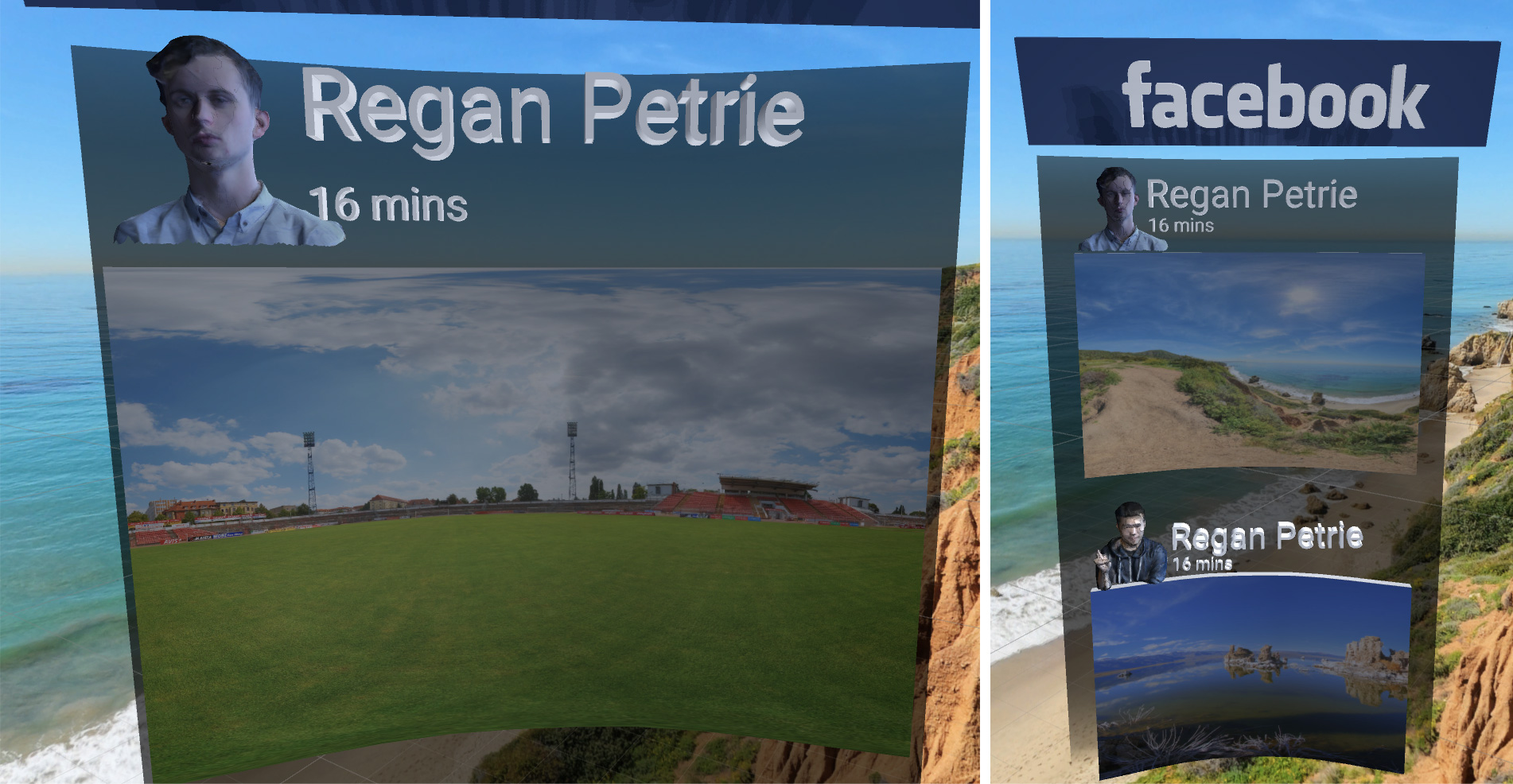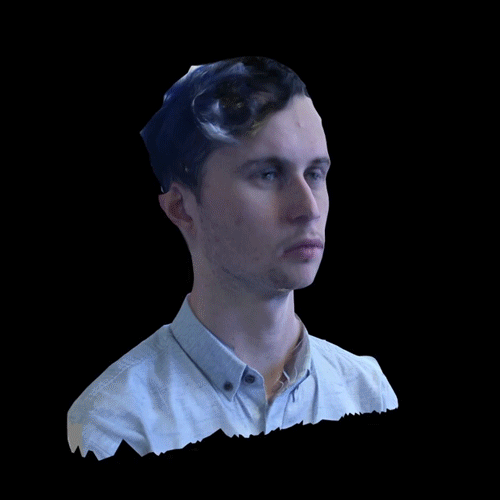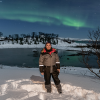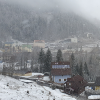We are experts at recognising faces, but are terrible at remembering names. We naturally understand volumetric models far quicker than 2D planes, and due to HMD’s (Head Mounted Display’s) current resolution issues current profile picture designs could diminish a VR experience.
The 3D scanning process itself was quite simple. I just got a DSLR camera and took a series of photos around the model (around 30), then took another series of photos around the top of their head – the rule I followed was that ‘each photo should have a 30% overlap with the previous and next picture’. I then took this into a program called Autodesk Remake which created the volumetric scan (using the photos). Next I exported this into Maya/Mudbox to fix up any typology and texturing issues (I would have liked to spend more time on this). I then exported this as an FBX into Unity.
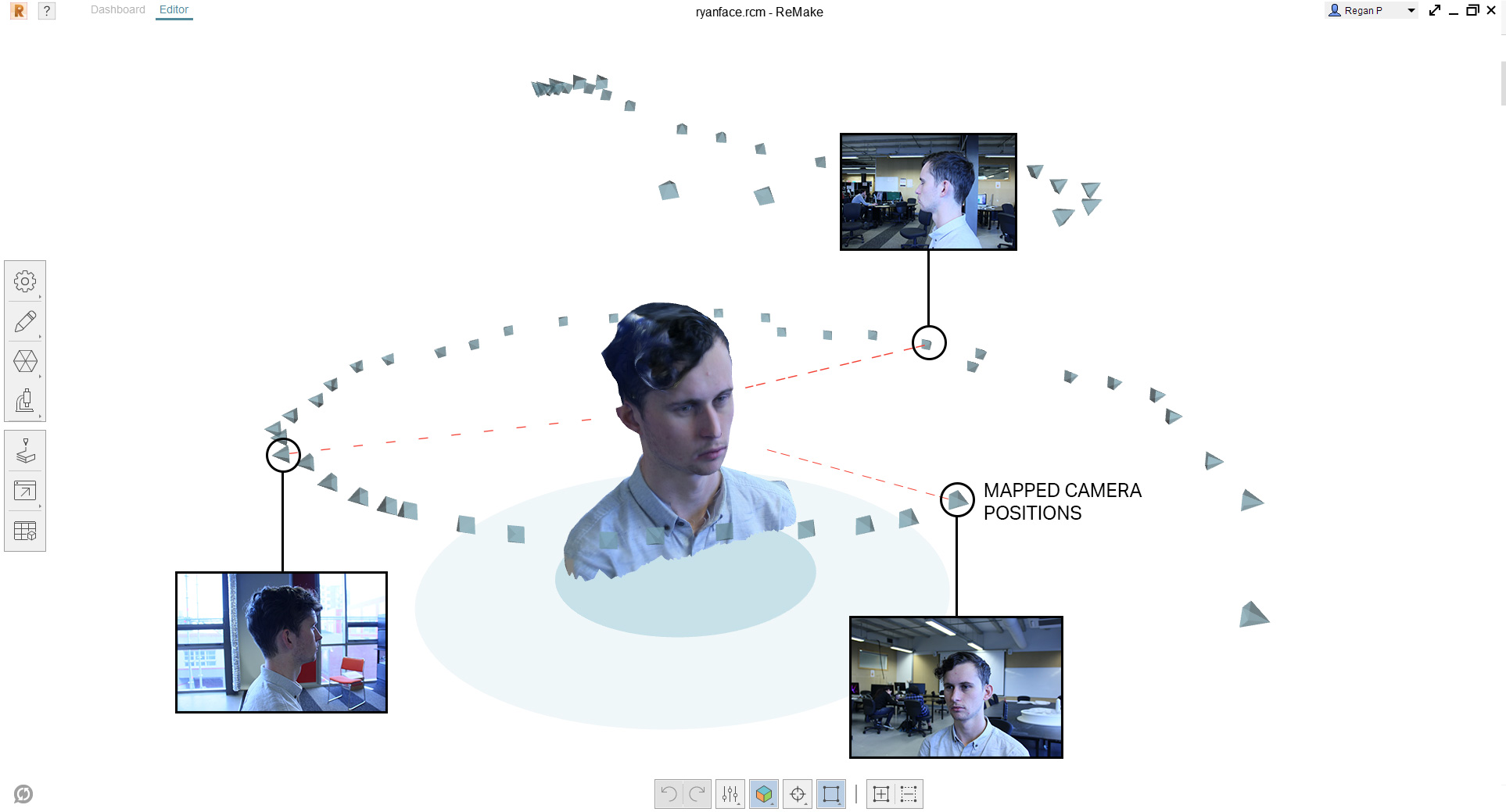
I tried doing some more complex scans that would be common for a user’s profile picture, such as holding a peace gesture with your hands, but it was a little too complex for the program to scan – it could potential be possible with a proper scanning method.
Virtual Reality, specifically social networking in VR, should take advantage of ‘volumetric profile pictures’ by using 3D scanning – this would also be a good design decision due to the lack of text legibility. Although I hadn’t had the opportunity to fully explore the design of ‘Facebook stories/posts’ I think this is a good start. In terms of hierarchy (size of content) I think it should be:
- Photo/Media
- Profile Picture
- Name
- Time
Taking this concept further I would like to completely remove the person’s name (maybe making it appear by gaze?) and give it more importance by increasing the scale. I would also like to link the interaction to the ‘pull to open’ interaction.
